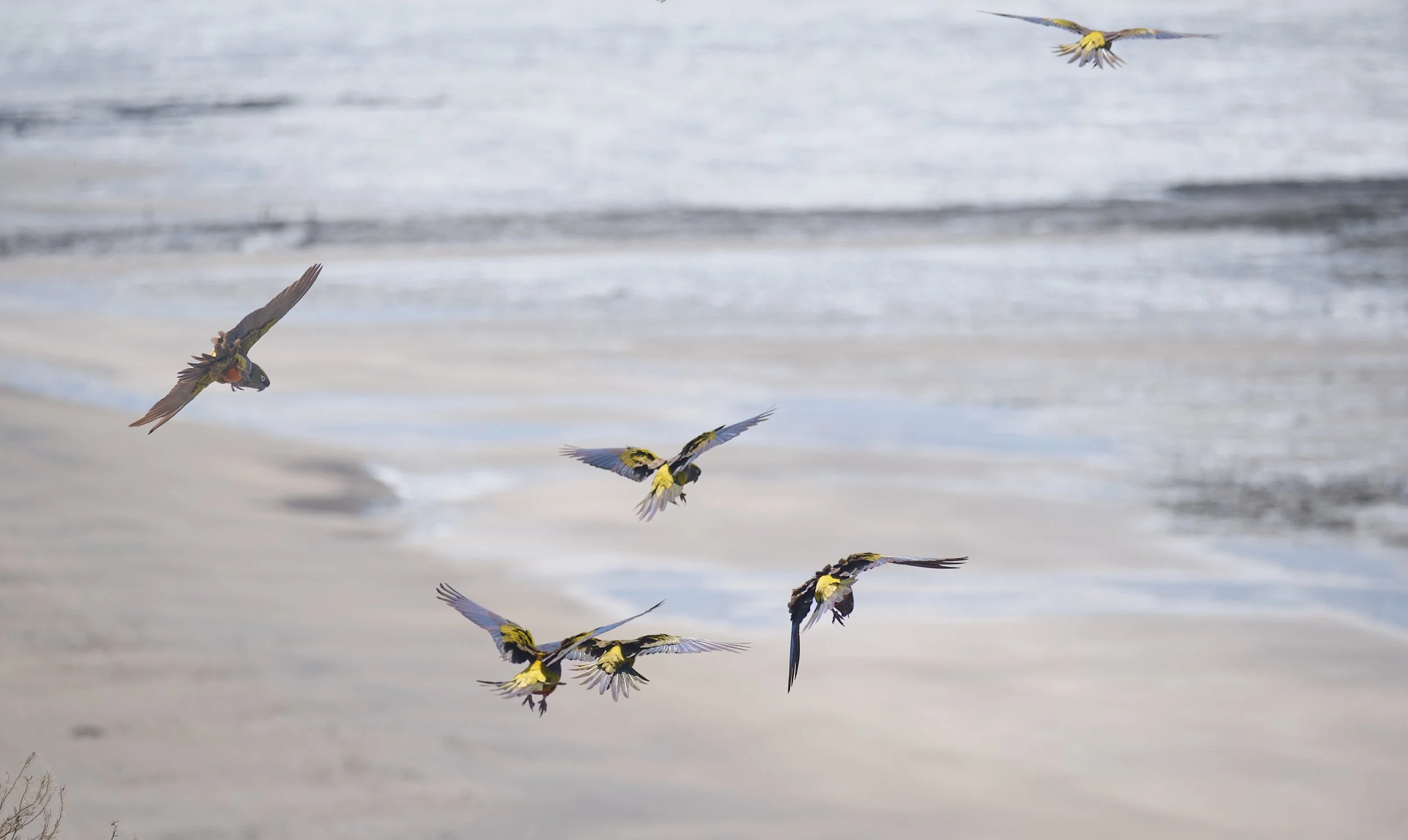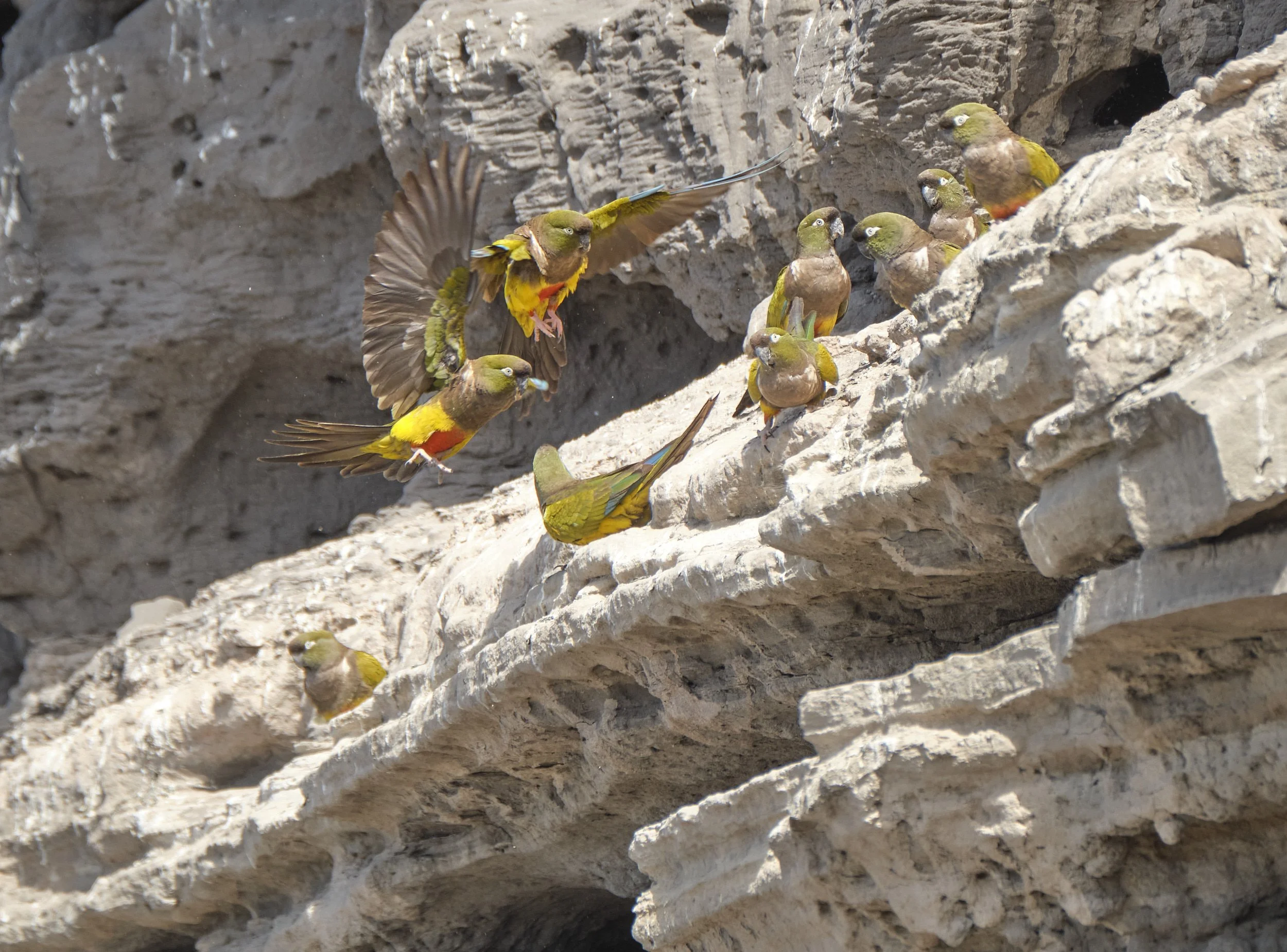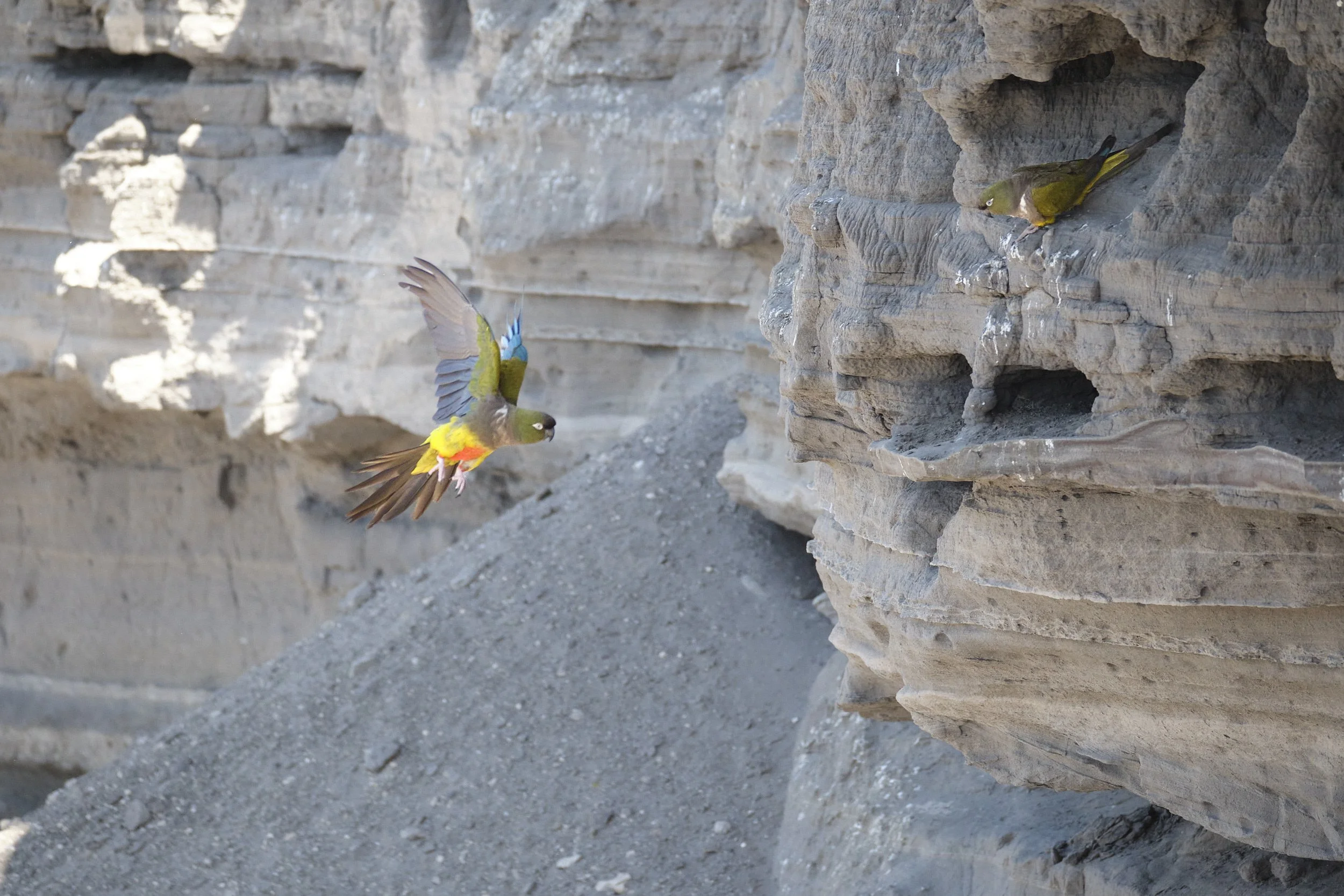Patagonia - November 21, 2024
Burrowing Parrot, cliffside
Arrived in BA on Saturday Nov 16. Met up with Robert, shared dinner and then I collapsed in bed at 9:30, having had vey little sleep the previous couple of nights, Toby and then an overnight flight. Awake at 9am and although a solid 11+ hours of sleep, still not feeling very rested.
I always love coming to BA, a city I really enjoy, but there was steady drizzle all day so R and I passed the afternoon away chatting in the coffee shop awaiting our pickup from Hugh, the owner of MacDermott’s Argentina. Hugh has prepared trips for me/us in the past, most recently in 2023, when he organized the trip that R and I took to Chile when we drove the Carretera Austral. I cannot recommend Hugh and his company highly enough. He is a very interesting man, has lived a truly adventurous life, is a fascinating conversationalist, well-read and a great planner and organizer. For R and I one of the highlights of the trip is the fact that Hugh has decided that he will personally guide us rather than arrange for someone to do it for us, so it should be a particularly special adventure.
This trip has had many iterations, we had originally planned to travel in April or May and drive from the tip of South America up through Patagonia and the Andes. However we had to change the timing, now in November, and we are now travelling in the southern hemisphere spring rather than the fall. As a result we now need to start in the warmest part of the country and drive south as Patagonia begins to emerge from winter and warm up.
Hugh has found some very interesting places, well off the normal itinerary so rather than a straight run down the country we will be working our way over to and down the Atlantic coast to some newly developed eco-parks and re-wilding areas. Then over to the Patagonian highlands where, amongst other things, we will be tracking wildlife and, in particular, puma.
Parrot Beach Coastline
Sunday Nov 17 - To begin our trip Hugh has invited us to spend our departure night at his house so that we can get an early start and be off at 6am on Monday morning. Great dinner and an early bed.
Monday Nov 18 - a long 12+ hour’s drive south to an interesting section of the Atlantic coast of Patagonia. Arrived at our very pleasant hotel, Casa Crespo, in the little town of Carmen de Patagonia, at 7pm. Good dinner and in the evergreen phrase of Samuel Pepys ‘and so to bed’.
Burrowing Parrots in flight
Tuesday Nov 19 - Today the trip really kicked off. After breakfast we drove to the little town of Balneario el Condor about half an hour from our hotel. It is situated on the ocean and extending from the edge of the town there are 18 kilometres of high sandstone cliffs filled with thousands of holes pecked and scratched into the crumbling sandstone by thousands of burrowing parrots. Barranquero parrots are a genetically distinct species of parrot once widespread throughout South America but now sadly in decline. These cliffs are the largest breeding ground of these parrots left in the world. It is estimated that there are currently over 37,000 active nests along the 18 kilometres of cliff-side. Since each nest contains 2 parents and 3 chicks on average, the number of birds is staggering.
We were met by Mauritsio, a scientist and educator, who has worked with the birds for many years and has been part of a group of research scientists who have published many books and scientific papers on the unique qualities of the breed. Mauritsio spent the morning and early afternoon with us as we walked the beach watching and learning about these birds. Our time was limited as the tide was beginning to make and it can create a very powerful sea when driven by a south wind, which it was that day. After a walk of about 1k along the beach studying the parrots and some of their predators, including a nest with 3 peregrine falcon chicks, we returned and reached the steps up the cliff side just as the water was beginning to wet our shoes.
The parrots are beautiful, noisy and fascinating to watch. While great flocks of them can lift into the air at once, you immediately notice that the flock is composed of hundreds of distinct pairs of birds. They are socially monogamous as are many other species but almost unique among life on our planet, they are genetically monogamous as well, so pair bonds are never broken. If one partner dies, the other survives as a widow or widower. Since their expected life in the wild is about 20 years, and their pair relationship is so strong it can be very difficult for the surviving partner, sound familiar? They are touchingly intimate with each other, touching beaks and continually watching and looking for each other.
Their diet is seeds and small fruit but much of their natural habitat is rapidly disappearing, as not surprisingly, they are not well-loved by local farmers. In many cases large flocks of birds have been tracked flying total distances of 260 kilometres a day to find food for themselves and their chicks.
Darwin on his Beagle voyage visited the parrot beach in 1833, although hardly the same beach since it was 2 kilometres further east than its present location. The power of the sea and the very soft sandstone of the local geology means that in the intervening 190 years the coastline has lost thousands of square kilometres of its landmass.
Because the sandstone cliffs are reasonably soft, there are periodic falls as the front edges of sections of the cliff carry away, no doubt weakened by the burrows, and many birds are killed. However the birds seem genetically predisposed to dig and once their feathers appear the chicks too begin to dig and enlarge their tunnels which can extend a metre or more back into the cliff. Their predators are not limited to flying foes, since, as we walked along the top of the cliffs we found holes dug by armadillos who dig down and enter breeding tunnels from the back to take eggs from the nests.
Peregrine Falcon chicks ready to fledge
Walking along the beach, masses of fallen cliff face are evident as piles of rubble along the foot of the cliffs. Interestingly, one of the benefits of the continually decaying sandstone cliffs is that with each cliff fall new sheets of fallen sandstone reveal clear tracks of pre-historic birds and animals which quickly weather away over the course of months to be replaced by new rock falls and new sets of tracks. Scientists have come from around the world to study these tracks which have been determined to be slightly older than 2 million years.
R and I were both captivated by the beach and cliffs and these fascinating birds and by their unusual adaptations. A fabulous day!
Click on the map to to follow my route






